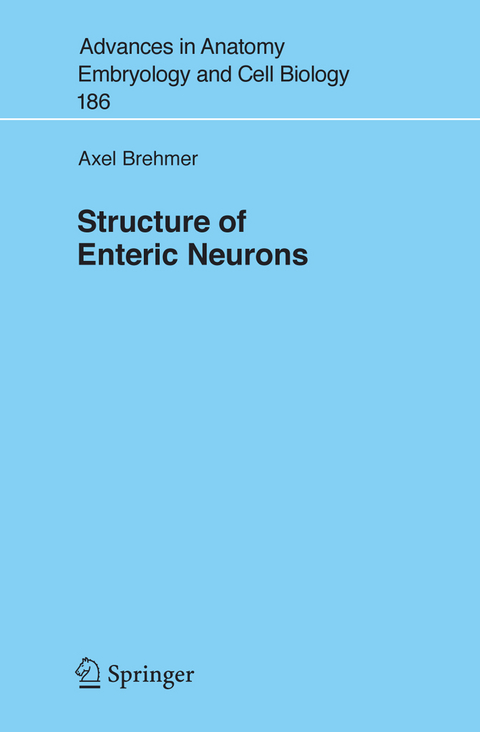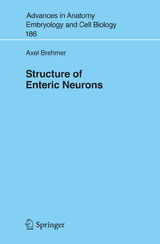Structure of Enteric Neurons
Springer Berlin (Verlag)
978-3-540-32871-1 (ISBN)
Introduction.- The enteric nervous system (ENS).- Ganglionated enteric plexuses.- Non-ganglionated enteric plexuses.- Morphological classifications of enteric neurons.- Material and methods.- Immunohistochemistry.- Immunocytochemistry.- Double labelling post mortem tracing.- Image aquisition of immunofluorescent specimens, counts, morphometry.- Three-dimensional(D-) reconstructions.- Chemical coding of Stach's neuron types in the pig.- Preliminary note: Cholinergic and nitrergic neurons.- Type I neurons.- Type II neurons.- Type III neurons.- Type IV neurons.- Type V neurons.- Type VI neurons.- Type VII neurons.- Dendritic type II neurons, mini neurons, giant neurons.- Morphological neuron types and their chemical coding in the human.- Nomenclature used for human enteric neurons.- Type II neurons.- Stubby (type I) neurons.- Spiny (type I) neurons.- Type V neurons.- Type III neurons.- Dendritic type II neurons.- Spiny neurons with main dendrites or human type VII neurons?- Discussion.- What does NF-immunohistochemistry achieve?- General remarks on equivalent neurons of different species.- Putative functional categories of human enteric neurons.- Plasticity.- Summary.- Acknowledgements.- References.- Subject Index.
| Erscheint lt. Verlag | 5.7.2006 |
|---|---|
| Reihe/Serie | Advances in Anatomy, Embryology and Cell Biology |
| Zusatzinfo | XI, 94 p. 24 illus., 2 illus. in color. |
| Verlagsort | Berlin |
| Sprache | englisch |
| Maße | 155 x 235 mm |
| Gewicht | 225 g |
| Themenwelt | Medizin / Pharmazie ► Studium |
| Schlagworte | Dogiel's classification • effector neurons • enteric nervous system • gut diseases • interneurons • neurohistopathological diagnostics • Neuron • Neuron / Nervenzelle • Population • primary afferent neurons • Stach's classification |
| ISBN-10 | 3-540-32871-8 / 3540328718 |
| ISBN-13 | 978-3-540-32871-1 / 9783540328711 |
| Zustand | Neuware |
| Haben Sie eine Frage zum Produkt? |
aus dem Bereich




